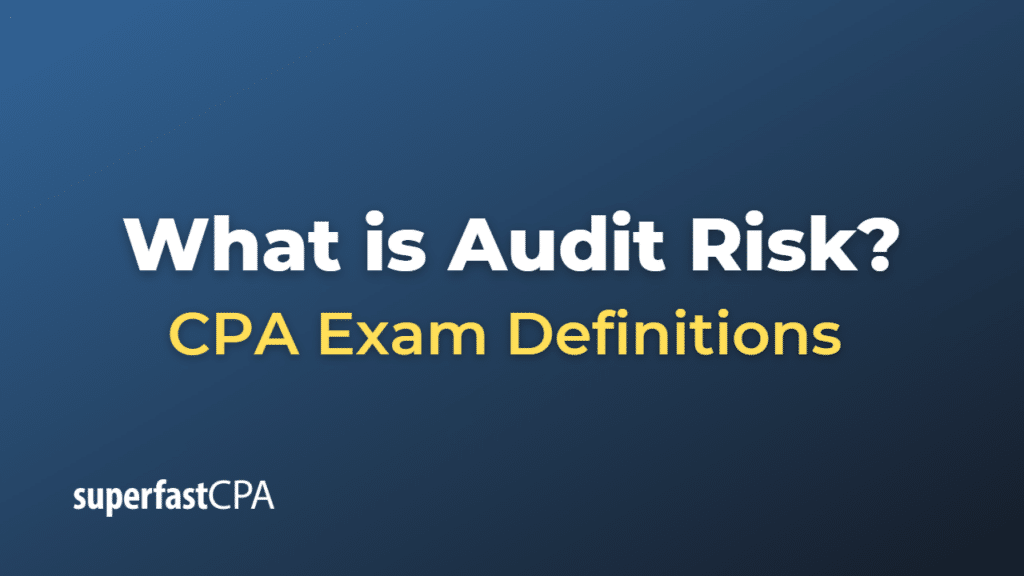Audit Risk
Audit risk is the risk that an auditor expresses an inappropriate opinion on the financial statements when they contain material misstatements. In other words, it’s the risk that an auditor will issue an unqualified (clean) opinion on financial statements that are materially misstated or not in compliance with the applicable financial reporting framework, such as International Financial Reporting Standards (IFRS) or Generally Accepted Accounting Principles (GAAP).
Audit risk is composed of three components:
- Inherent risk: The susceptibility of an account balance or class of transactions to material misstatements, either individually or when aggregated with other misstatements, assuming there are no related controls in place. Inherent risk is affected by factors such as the complexity of transactions, the nature of the business, and the potential for fraud.
- Control risk: The risk that a material misstatement in an account balance or class of transactions will not be prevented or detected and corrected on a timely basis by the entity’s internal control system. Control risk is affected by the design, implementation, and effectiveness of internal controls.
- Detection risk: The risk that the audit procedures performed by the auditor will not detect a material misstatement that exists in an account balance or class of transactions. Detection risk is affected by the nature, timing, and extent of audit procedures, as well as the effectiveness of the auditor’s procedures in detecting misstatements.
Auditors aim to reduce audit risk to an acceptably low level by assessing and understanding these components, tailoring their audit procedures accordingly, and gathering sufficient appropriate audit evidence to support their opinion on the financial statements.
Example of Audit Risk
Let’s consider an example of audit risk involving a hypothetical company, XYZ Corporation.
XYZ Corporation is a rapidly growing technology company that has recently implemented a new, complex revenue recognition system. The company has multiple revenue streams, including software sales, subscriptions, and consulting services. The finance team is relatively small, and there is a high degree of pressure to achieve aggressive revenue targets.
Inherent risk: Due to the complexity of the company’s revenue streams and the new revenue recognition system, there is a high inherent risk of material misstatements in the revenue accounts. The pressure to achieve revenue targets also increases the risk of fraud, such as premature revenue recognition or manipulation of sales figures.
Control risk: Since the finance team is small and the company is rapidly growing, there may be inadequate segregation of duties and a lack of effective internal controls over the revenue recognition process. This increases the control risk, as material misstatements may not be prevented or detected and corrected by the company’s internal control system.
Detection risk: The auditor must design and perform audit procedures to address the high inherent and control risks related to revenue recognition. However, there is a risk that the auditor’s procedures will not detect material misstatements, particularly if the auditor does not have a deep understanding of the complex revenue recognition system or fails to apply appropriate professional skepticism when evaluating management’s judgments.
In this example, the audit risk arises from the combination of inherent risk, control risk, and detection risk. The auditor should assess these risks, plan and execute the audit accordingly, and gather sufficient appropriate audit evidence to reduce the audit risk to an acceptably low level. This may involve testing the effectiveness of internal controls, performing substantive analytical procedures, and testing the accuracy and completeness of revenue transactions recorded in the financial statements.













